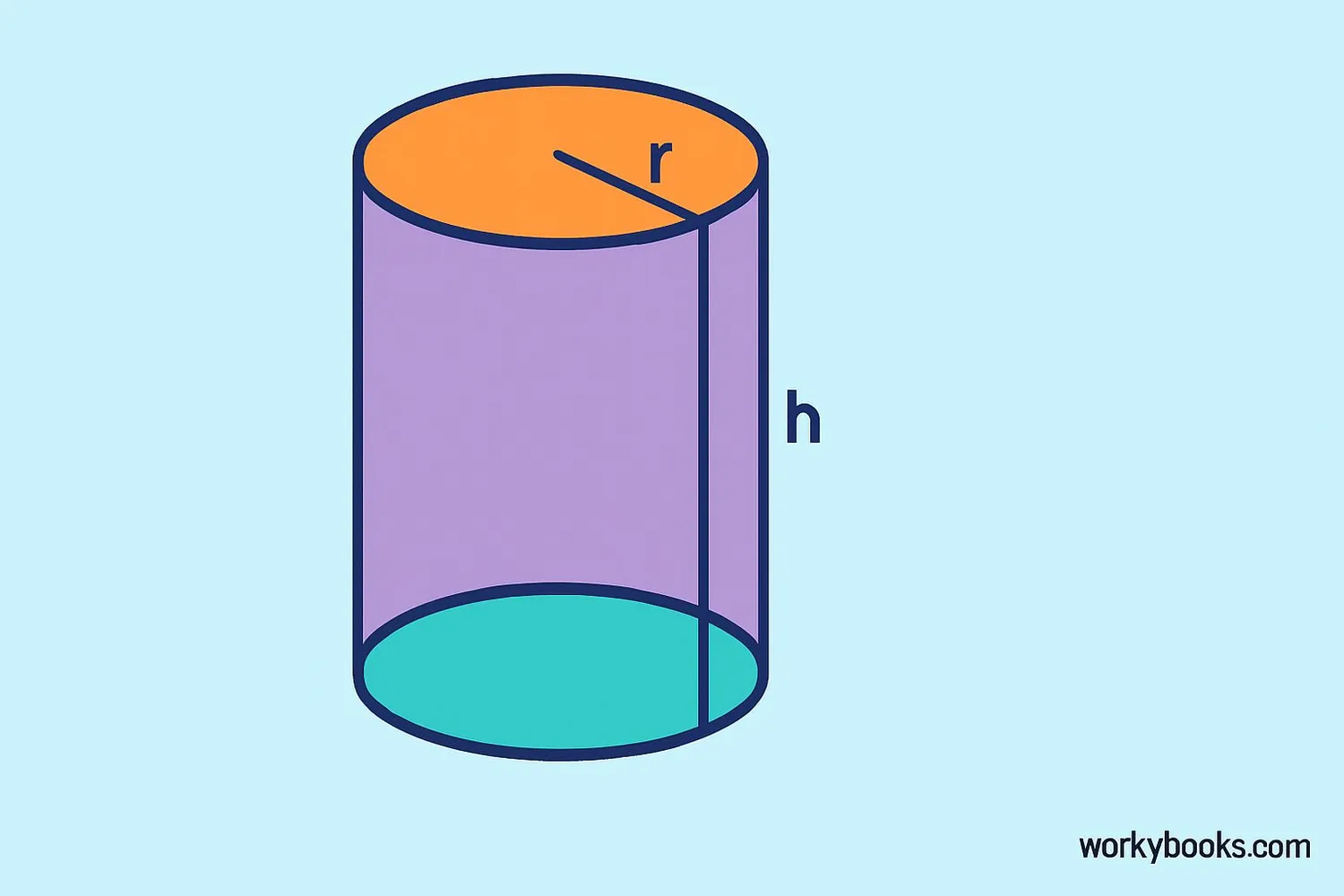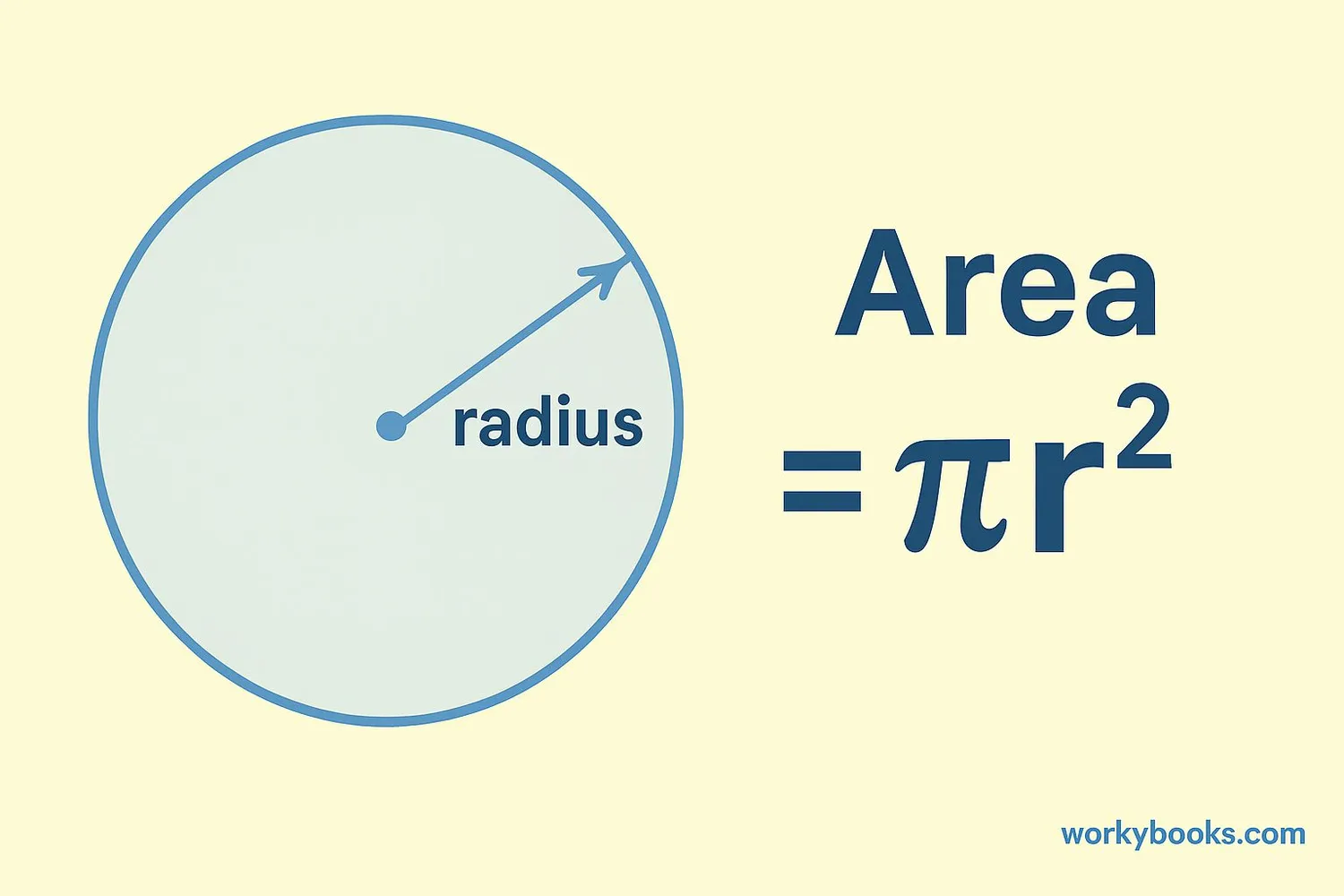Base Area of a Cylinder - Definition, Examples, Quiz, FAQ, Trivia
Learn how to calculate the base area of cylinders with simple explanations and practice activities
What is the Base Area of a Cylinder?

A cylinder is a three-dimensional shape with two parallel circular bases and a curved surface connecting them. The base area of a cylinder refers to the area of one of these circular bases.
Since both bases of a cylinder are identical circles, we only need to calculate the area of one base to find the base area. This is different from the total surface area, which includes both bases and the curved surface.
Understanding the base area is important because:
- It helps calculate the volume of the cylinder (Volume = Base Area × Height)
- It's used in finding the total surface area
- Many real-world objects like cans, pipes, and towers have cylindrical shapes
Key Concept
The base area of a cylinder is always a circle, so we use the area formula for circles: π × radius².
How to Calculate Base Area

Calculating the base area of a cylinder is simple when you know the formula for the area of a circle. Here's how:
Base Area Formula
Where:
A = Base Area
π ≈ 3.14 (or use the π button on your calculator)
r = radius of the base
- Measure the radius (r) of the circular base
- Square the radius (multiply radius by itself)
- Multiply the squared radius by π (3.14)
- The result is the base area in square units
Step 1: r = 4 cm
Step 2: r² = 4 × 4 = 16
Step 3: π × r² = 3.14 × 16 = 50.24
Step 4: Base area = 50.24 cm²
Remember
The diameter is twice the radius. If you know the diameter (d), first divide it by 2 to get the radius: r = d/2
Calculation Examples

Example 1: Simple Calculation
A cylinder has a base radius of 5 meters. What is its base area?
r = 5 m
r² = 5 × 5 = 25
A = π × r² = 3.14 × 25 = 78.5 m²
Example 2: Using Diameter
A cylindrical water tank has a base diameter of 14 feet. What is its base area?
Diameter d = 14 ft
Radius r = d/2 = 14/2 = 7 ft
r² = 7 × 7 = 49
A = π × r² = 3.14 × 49 ≈ 153.86 ft²
Example 3: Finding Volume
A cylinder has a base area of 78.5 cm² and height of 10 cm. What is its volume?
Volume = Base Area × Height
Volume = 78.5 cm² × 10 cm = 785 cm³
Practice Tip
Remember to include square units (like cm² or m²) for area measurements. This shows it's a two-dimensional measurement.
Practice Quiz
Test your understanding of cylinder base area with these practice questions. Choose the best answer for each question.
Frequently Asked Questions
Here are answers to common questions about cylinder base area:
Geometry Trivia
Discover interesting facts about cylinders and geometry:
Ancient Cylinders
The ancient Egyptians used cylindrical measurements over 4,000 years ago. They calculated the volume of cylindrical grain stores to manage food supplies.
Strong Shapes
Cylinders are one of the strongest geometric shapes. That's why we use them for structures like water towers, gas cylinders, and pillars in architecture.
Space Cylinders
Many spacecraft components are cylindrical because this shape distributes pressure evenly and withstands the forces of launch better than other shapes.
Largest Cylinder
The world's largest cylinder is the gasometer in Oberhausen, Germany. It's 117 meters tall with a diameter of 67 meters, storing over 347,000 cubic meters of gas!


